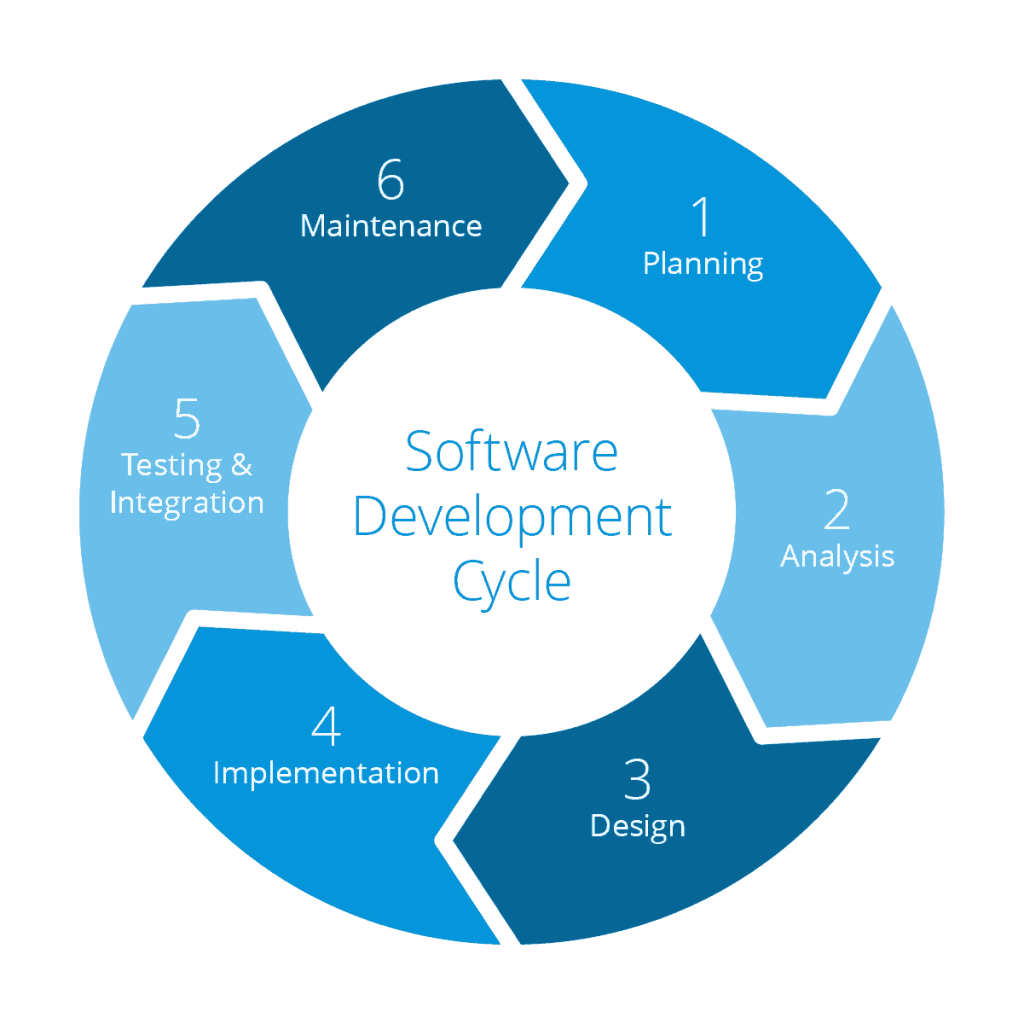Our Agile process
With long-standing experience in delivering corporate web and mobility
applications to large businesses with complex technical IT needs
Agile is a process by which a team can manage a project by breaking it up into several stages and involving constant collaboration with stakeholders.
The Agile methodology begins with clients describing how the end product will be used and what problem it will solve. This clarifies the customer’s expectations to the project team.
Once the work begins, teams cycle through a process of planning, executing, and evaluating — which might just change the final deliverable to fit the customer’s needs better. Continuous collaboration is key, both among team members and with project stakeholders, to make fully-informed decisions and deliver continuous improvement and iteration at every stage.
Agile Methodologies Overview
The core of the Agile methodology was developed by a small group of developers in 2001. Their Agile Manifesto of Software Development put forth a groundbreaking mindset on delivering value and collaborating with customers. Agile’s four main values are expressed as:
- Individuals and interactions over processes and tools
- Working software over comprehensive documentation
- Customer collaboration over contract negotiation
- Responding to change over following a plan


CASE STUDIES
Recent posts:
- Unlocking Tech Success: How A Fractional CIO Could Help You Achieve Your Growth Goals
 If you’re growing a business, there will come a time when you need specialised skills that are not readily available in-house. Yet hiring full-time specialists might not be possible until your business reaches a particular size or degree of stability. That’s where we can help you bridge the gap with our fractional Chief Technology Officer (CTO) or Chief Information Officer (CIO) service.
If you’re growing a business, there will come a time when you need specialised skills that are not readily available in-house. Yet hiring full-time specialists might not be possible until your business reaches a particular size or degree of stability. That’s where we can help you bridge the gap with our fractional Chief Technology Officer (CTO) or Chief Information Officer (CIO) service. - From Idea to Reality: The Role of Market Research in Bespoke Software Development
 Last month we looked at the various steps involved in taking your technology/software project from idea to reality. One of the steps we outlined was the importance of market research and insight gathering. Here we take a deeper dive into how to approach the research phase.
Last month we looked at the various steps involved in taking your technology/software project from idea to reality. One of the steps we outlined was the importance of market research and insight gathering. Here we take a deeper dive into how to approach the research phase. - From Idea To Reality: Scaling Your Business With Technology
 Bespoke software that makes your business more efficient and effective helps you scale and adds value. Whether you’re building a business to provide an ongoing income, or you plan to sell in future, good technology can be pivotal to your success.
Bespoke software that makes your business more efficient and effective helps you scale and adds value. Whether you’re building a business to provide an ongoing income, or you plan to sell in future, good technology can be pivotal to your success.